Gaudo Suspension Bridge (가우도 출렁다리)
17.0Km 2024-01-11
San 7-1 Singi-ri, Doam-myeon, Gangjin-gun, Jeollanam-do
Gaudo Island, the only inhabited island among Gangjin's eight islands, is connected to the mainland by a suspension bridge. The suspension bridges installed on both sides of the island have emerged as Gangjin's famous destination, attracting hundreds of thousands of visitors every year. While crossing the dizzying suspension bridge, one can see the wonderful seascape that changes in brightness depending on the waves. The footbridges, Jeodu Suspension Bridge (438 m) or Dasan Bridge (716 m), can be used to entrance Gaudo Island, and there is also a clean trail along the coastline. It takes about one to one and a half hours to walk across both bridges, making it a great place to enjoy a walk.
Gaudo Island (가우도)
17.1Km 2025-01-17
473, Wolgot-ro, Gangjin-gun, Jeollanam-do
+82-61-430-3114
Gaudo Island is the only populated island of the eight islands in Gangjinman Bay. The name comes from its appearance in relation to Boeunsan Mountain in Ganjin-eup, which looks like a cow’s head. The whole island resembles a cow’s meonge (curved stick around cow’s neck used to drag farming tool) so the island became to be called Gaudo Island (Ga: Meonge in Chinese characters).
From Gaudo Island, Gangjinman Bay and the uninhabited islands can be seen in all directions. The coastal scenery is stunning and varied natural tourism resources grow here such as the silver magnolia, cypress colony, and Japanese black pines. Visitors can walk to the island from the mainland via a suspension bridge. When arriving to the island, a 2.5-kilometer long ecological exploring road along the mountain and coast is available. Also, fishing park which has various kinds of fishes is located in the spot where visitors can overlook at beautiful scenery of Gangjinman Bay. At the top of the island, visitors can enjoy a zip track which is an eco-friendly leisure facility, starting from the 25-meter Cheongja Tower.
Birthplace of Yeongnang (강진영랑생가)
17.3Km 2019-08-10
15, Yeongnangsaengga-gil, Gangjin-gun, Jeollanam-do
+82-61-430-3185
Kim Yun-sik was born on this site on January 16, 1903 as the first-born of two sons and three daughters. Under the pen name Yeongnang, he was active in literature until his death on September 29, 1950. Among the 80 poems he published, more than 60 were written in this place where he lived a life resisting Japanese imperialism and refusing to change his name to a Japanese name. After he moved to Seoul in 1948, his birthplace was resold several times, but the county of Gangjin-gun bought it in 1985 to restore it to its original state with a thatched-roof. The site features many of the poet’s writing materials and the site has a small well, camellia trees, jangdokdae (a platform where large clay pots used for storing food are kept), persimmon trees, and a peony garden.
Haetae Sikdang (해태식당)
17.3Km 2024-02-16
6 Seoseongan-gil, Gangjin-eup, Gangjin-gun, Jeollanam-do
Haetae Sikdang specializes in Namdo-style hanjeongsik (Korean table d'hote), with the Haetae jeongsik (Haetae set menu) being the sole offering on its menu. This nutritious array of dishes is prepared using ingredients sourced from the rich natural environment of Gangjin. The selection of food varies seasonally, featuring Gangjin daehap (hard clams) in spring, minmul jangeo (freshwater eel) in summer, jeoneo (gizzard shad) and odori (raw shrimp) in autumn, and maesaengiguk (seaweed fulvescens soup) in winter, ensuring a diverse and fresh dining experience throughout the year.
Gangjin Ziptrek (강진 짚트랙)
17.8Km 2024-01-11
49-9 Gaudo-gil, Doam-myeon, Gangjin-gun, Jeollanam-do
This exciting activity can be enjoyed at the 25-meter high celadon tower located in the center of Gaudo Island. Gaudo Ziptrek is approximately 1 kilometer long and boasts the longest one in Korea as a maritime experience facility. After wearing safety equipment on the tower's first floor, visitors can ride the Ziptrek at the top of the sixth floor. The ziptrek offers an exhilarating downhill slide that feels like flying in the sky with magnificent scenery that unfolds down below. The slide ends at the entrance to the suspension bridge.
Dongmun Maebanga (동문매반가)
17.8Km 2024-01-11
27 Sauijae-gil, Gangjin-eup, Gangjin-gun, Jeollanam-do
Dongmun Maebanga is where Dasan Jeong Yak-yong, a representative civil servant of the Joseon dynasty and a Silhak scholar, stayed after being exiled to Gangjin. It now operates as a restaurant that serves the curled mallow soybean paste soup he enjoyed. It is right across from Sauijae House, where Dasan lived and devoted himself to education and academic research, so it is recommended to look around before going for a meal. Its signature menu is “Dasan Set Menu,” which comes with the curled mallow soybean paste soup and pan-fried battered clams. Other dishes such as braised red stingray, sea snail salad, and spicy stir-fried marinated pork are all plentiful and delicious.
Yehyang (예향)
17.9Km 2024-02-19
11-1 Boeun-ro 3-gil, Gangjin-eup, Gangjin-gun, Jeollanam-do
061-433-5777
Yehyang is a traditional Korean table d'hote restaurant that originated in 1930 on Yeongrang-ro in Gangjin. They offer set menus such as ye jeongsik, hyang jeongsik, and surasang, all served based on a portion size for four people. Using natural ingredients, they provide healthy and flavorful meals with dishes like hongeo samhap (skate, pork, and kimchi combo), tteokgalbi (grilled galbi patties), and bori gulbi (barley-aged dried yellow croaker).
Wangbeot 165 (왕벚165)
18.2Km 2024-02-20
165 Wangin-ro, Seoho-myeon, Yeongam-gun, Jeollanam-do
Wangbeot 165 is a locally recommended Korean restaurant that excels in both taste and atmosphere. Its signature dish is dongchunghacho baeksuk (whole chicken soup with cordyceps), a hearty soup made with chicken, dongchunghacho (cordyceps), abalone, octopus, and various medicinal herbs, boiled to perfection. The ambiance of the hanok adds to the dining experience. Located near the site of the Historic Site of Wang In, where cherry blossoms bloom in spring, diners can enjoy their meal amidst the beauty of the blossoms.
Yeongamho Lake (migratory bird habitat) (영암호 - 철새도래지)
19.4Km 2025-01-08
Yongang-ri, Yeongam-gun, Jeollanam-do
+82-61-470-6071
This is a huge lake created when the Geumho tide embankment was constructed in Yeongam on November 1996, as part of a national project to reclaim some 4.3 kilometers stretch of sea from Sampo-ri in Samho-myeon of Yeongam-gun to Byeoram-ri in Hwawon-myeon of Haenam-gun.
Some 100 species of migratory birds, numbering some 300,000, live in this area over the winter on the mud flats which are full of things to eat. Around the embankment where the sea water and fresh water meet, there is a great spot to fish for both fresh water and the sea species. This is perhaps the only place in Korea where the long and silvery cutlass fish, usually found in the deeper areas of the ocean, can be caught while sitting on the rocks along the seashore.

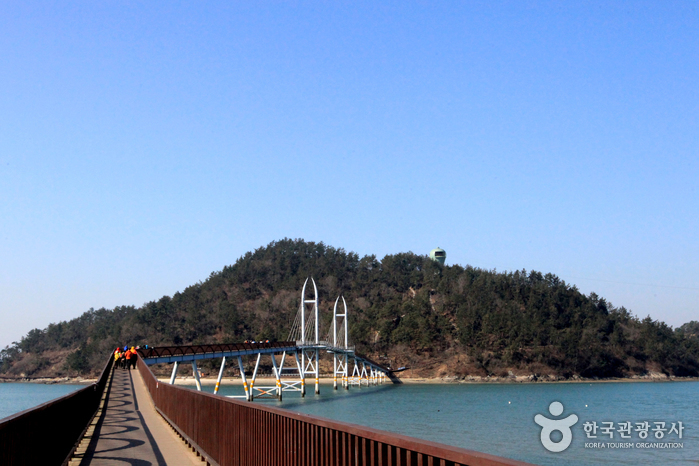
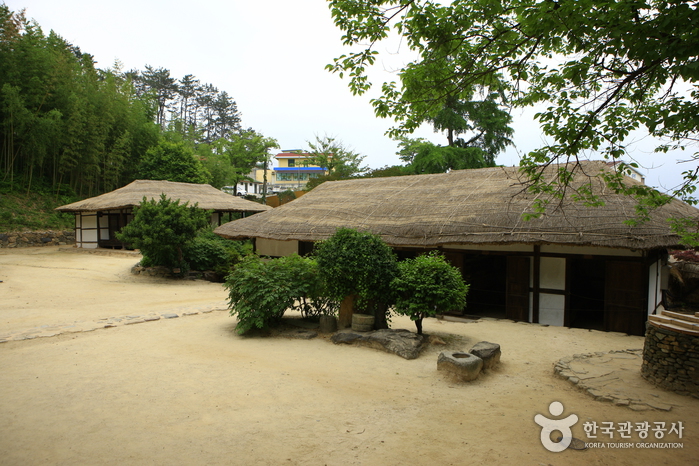

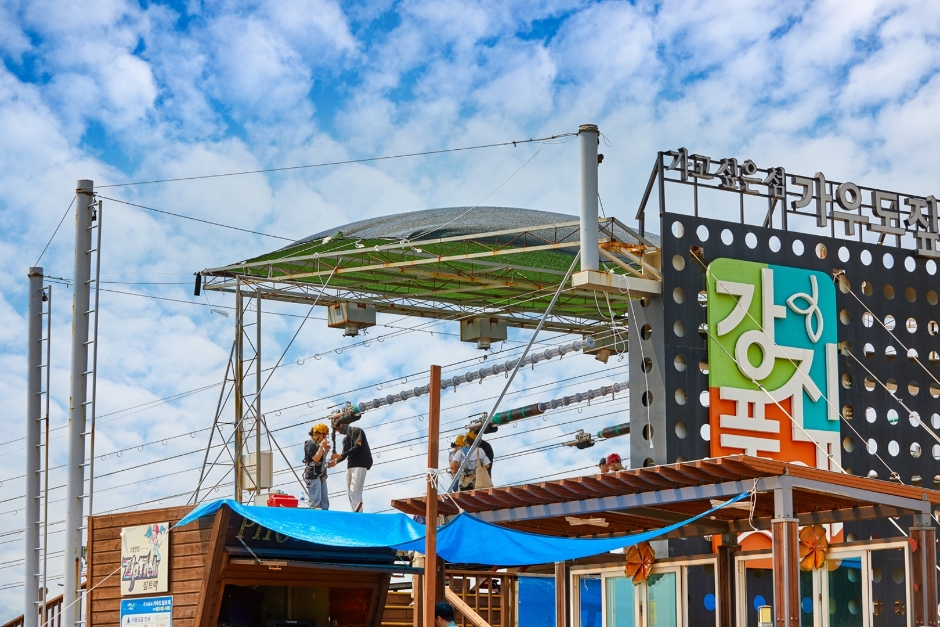
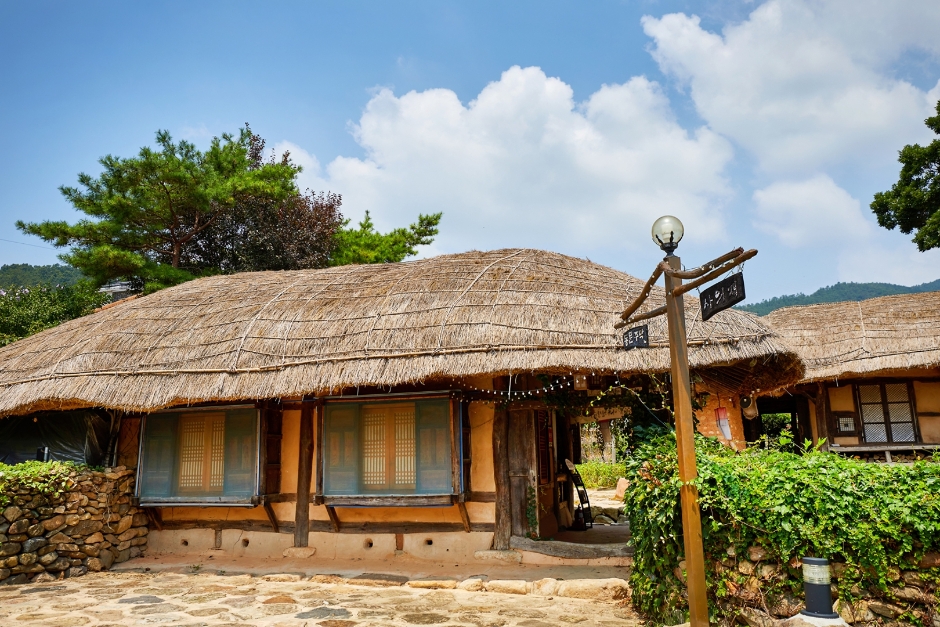
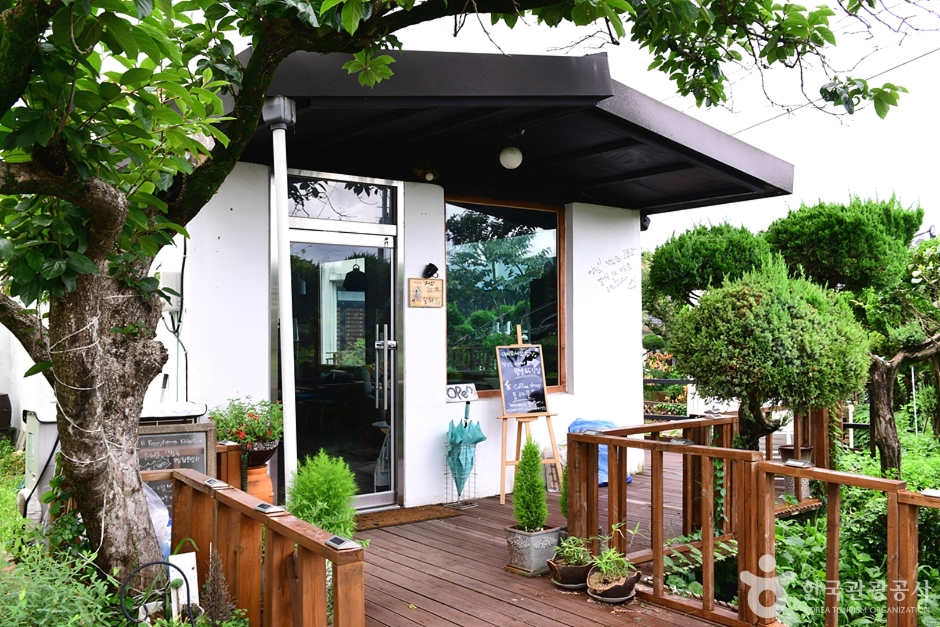
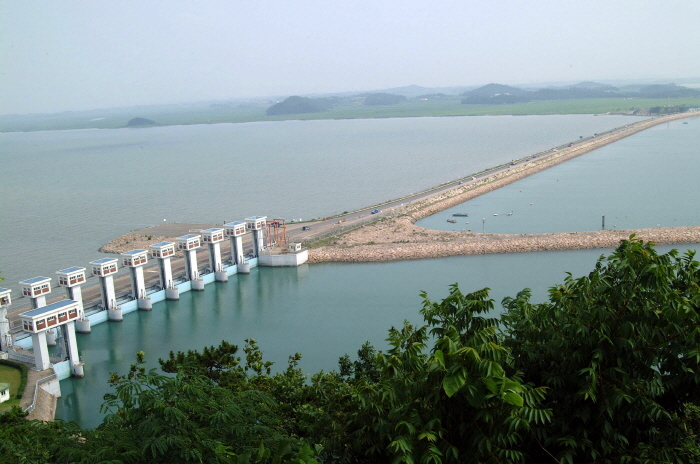
 English
English
 한국어
한국어 日本語
日本語 中文(简体)
中文(简体) Deutsch
Deutsch Français
Français Español
Español Русский
Русский